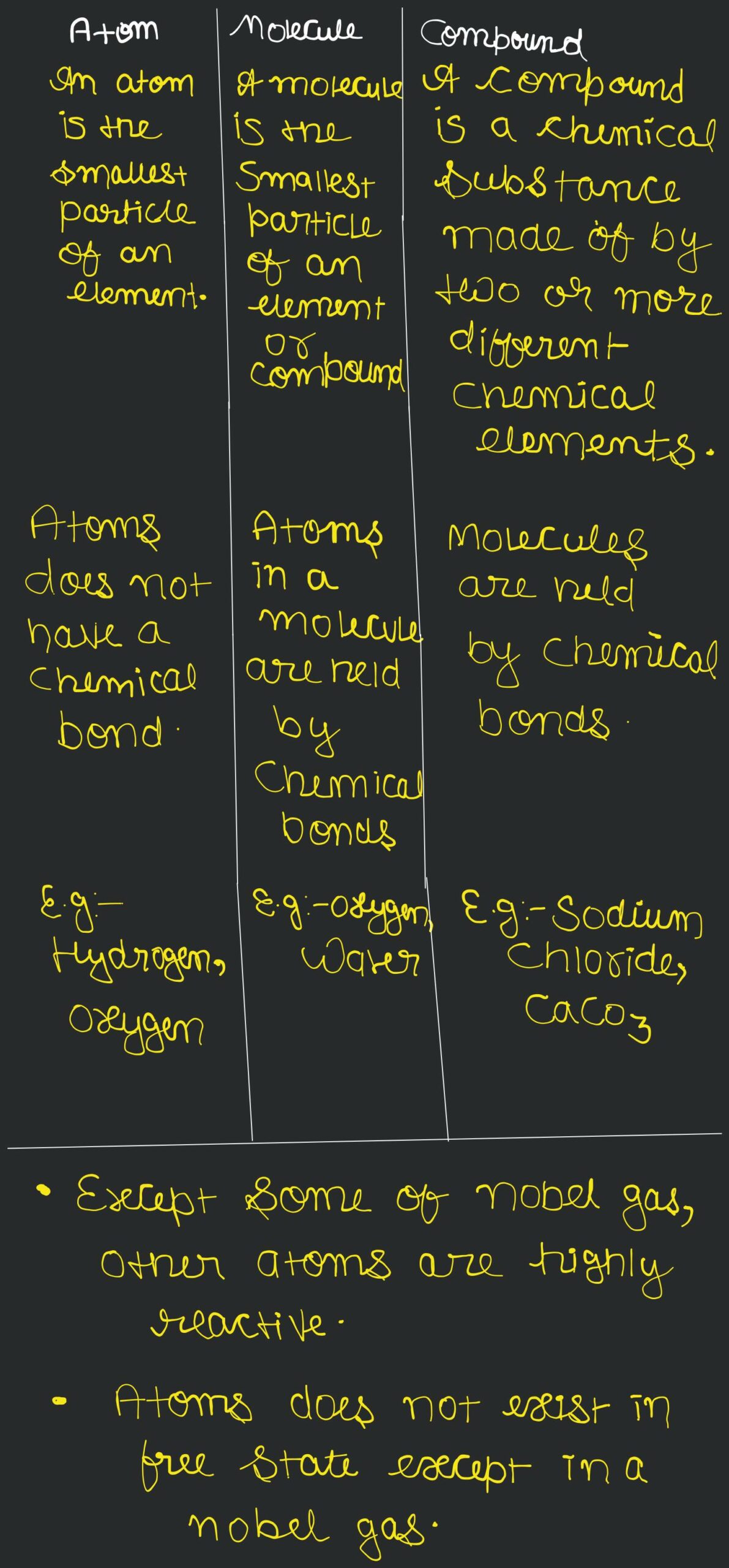The distinction between an atom and a compound encapsulates fundamental principles of chemistry, serving as a cornerstone for understanding matter. Each entity plays a critical role in the realm of both theoretical and applied sciences. To elucidate this difference, we will explore the definitions, characteristics, classifications, and examples associated with each, ultimately showcasing their significance in the broader context of chemistry.
Definition of an Atom
An atom is the quintessential unit of matter, consisting of a nucleus surrounded by a cloud of electrons. This nucleus is itself composed of protons and neutrons, which are subatomic particles exhibiting specific properties. Protons bear a positive charge, while neutrons have no charge, creating a neutral core. The number of protons in the nucleus, known as the atomic number, defines the element. For instance, hydrogen possesses one proton, while carbon holds six, leading to their unique identities in the periodic table.
Characteristics of Atoms
Atoms, the building blocks of matter, exhibit distinct characteristics. Their small size, typically on the nanometer scale, renders them invisible to the naked eye yet instrumental in forming larger structures. Atoms maintain stability through electron configurations, where electrons occupy specific orbitals corresponding to energy levels. This arrangement influences the chemical properties of the element, determining how it interacts with other atoms or compounds.
Classification of Atoms
Atoms can be classified into various categories based on their properties. The primary classification includes:
- Elements: Pure substances consisting of a single type of atom. Examples include gold (Au), oxygen (O), and iron (Fe).
- Ions: Atoms that have gained or lost electrons, resulting in a net charge. Cations (positively charged) and anions (negatively charged) arise from this process.
- Isotopes: Variants of the same element that have the same number of protons but different numbers of neutrons, leading to varying atomic masses. Carbon-12 and Carbon-14 are well-known isotopes of carbon.
Definition of a Compound
A compound, in contrast, is a substance formed when two or more different elements chemically bond. The process of bonding results in new molecular structures with properties distinct from the individual constituents. Compounds may exist as molecules, ions, or networks, depending on their composition and the nature of the chemical bonds present.
Characteristics of Compounds
Compounds exhibit distinct characteristics that arise from the interactions between their constituent atoms. They possess a defined chemical formula, indicating the types and ratios of elements present. For instance, water (H2O) consists of two hydrogen atoms and one oxygen atom. Furthermore, compounds can be classified as organic or inorganic, with organic compounds primarily containing carbon and hydrogen, whereas inorganic compounds may not contain carbon at all.
Types of Chemical Bonds in Compounds
The formation of compounds relies on various types of chemical bonds, which can significantly influence their properties. The principal types of bonds include:
- Ionic Bonds: Formed through the transfer of electrons from one atom to another, resulting in the formation of oppositely charged ions. Sodium chloride (NaCl), or table salt, exemplifies an ionic compound.
- Covalent Bonds: Established through the sharing of electron pairs between atoms. Compounds like methane (CH4) are characterized by covalent bonds, where carbon shares electrons with hydrogen atoms.
- Metallic Bonds: Occurring in metal compounds, where electrons are delocalized and shared among a lattice of ions, granting metals their characteristic conductivity and malleability.
Examples of Compounds
Understanding the distinction between atoms and compounds is further enhanced by exploring specific examples. Common compounds such as carbon dioxide (CO2), sodium bicarbonate (NaHCO3), and acetic acid (C2H4O2) demonstrate the unique combinations of individual atomic elements contributing to emergent properties. Each compound manifests distinct physical and chemical properties, underscoring the diversity afforded by atomic arrangements.
Comparison and Conclusion
In summation, the differences between atoms and compounds are profound yet intertwined. Atoms serve as the basic units of matter, characterized by their elemental properties, while compounds arise from the chemical fusion of two or more distinct atomic entities. This relationship underscores the complex nature of chemistry, illustrating how fundamental particles can integrate to yield diverse materials with specific functionalities. Understanding these concepts not only provides insight into the microscopic world but also forms a foundational basis for further inquiry in chemical sciences.
Ultimately, comprehending these differences enhances our grasp of various scientific disciplines, paving the way for advancements in fields ranging from materials science to biochemistry and environmental science.












